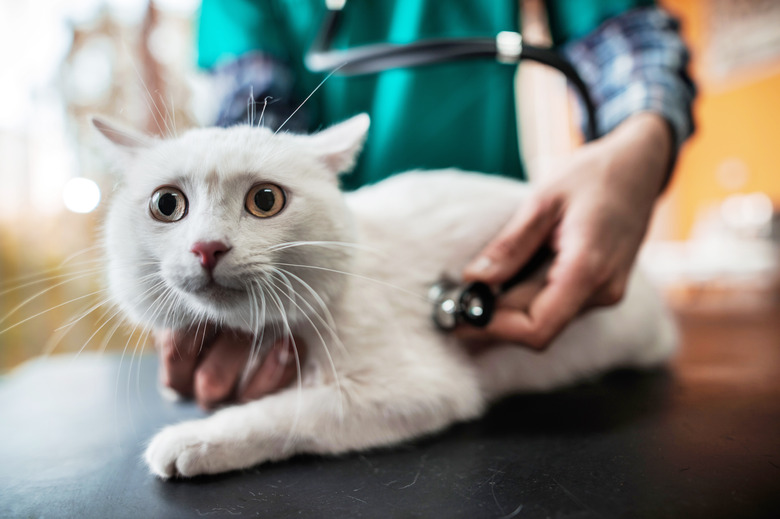How To Figure Out A Cat's Emotions
What are cat feelings, exactly? Understanding cat emotions takes time and patience since these mysterious creatures aren't always as easy to read as other common household pets. To get a handle on cat eye emotions and cat ear emotions, paying careful attention to these body parts is key. You'll also want to tune in your hearing so you can suss out what each type of feline vocalization means. With this information in hand, you'll be on your way to nailing what's behind cat emotions, and your ability to care for your feline will no doubt improve.
Cat tail emotions
Cat tail emotions
Whether your cat's body seems to be indicating joy, contentment, fear, or aggression, watching her individual parts can clue you in to how she's feeling.
- Tail motions: Is your cat's tail erect and proud? It's likely she's happy. But if you notice the fur standing up on her tail or that it's tucked between her legs, these cat feelings may indicate anger, fear, or insecurity.
- Ear position: Ears that are pointing forward mean your kitty is interested and alert in what's happening around her. Ears that are backward or laying flat, on the other hand, could be a signal that your cat is frightened or irritated.
- Kneading: This funny motion looks like your cat is playing the piano or kneading dough, but in reality, this happy act may be left over from her kitten days when she kneaded while nursing.
- Eyes: Cat eye emotions are tricky, as constricted pupils could be a good thing (contentment) or a negative (aggression). Dilated pupils could indicate nervous feelings, defensive aggression, or feelings of playfulness.
- Body movement: Does your cat have an arched back? If the fur is standing up, watch out — your cat is angry. But if it's flat, your feline is OK with some petting.
Cat feelings you can hear
Cat feelings you can hear
Are you curious about a cat emotion you can hear? Each one is different, of course, so here's a rundown of the various noises your kitty may be making and what kind of feeling is behind each:
- Meow: This all-purpose comment from your cat could be a greeting or possibly a demand for attention. Your kitty could be asking for food or some affection when he starts to meow.
- Chirp: Walk this way! A chirp from your cat means "follow me" — right to the treat bag, perhaps?
- Yowl: A howl or yowl isn't always a good thing since it could mean "scram!" But a yowl might also be your cat's way of signaling distress if he's stuck somewhere, or it could indicate confusion if he's elderly.
- Hiss: Do not mess with a hissing cat. He's angry and annoyed and wants to be alone.
- Purr: Aww, this is the best sound of all! Purring often means your cat is content and happy.
Better bonding with your cat
Better bonding with your cat
Learning to meet your cat's emotional needs and understand cat feelings starts with good bonding. A fearful cat or one who is new to the home needs gentle consistency in order to settle down and become acclimated.
To help, talk in a soft voice and move around the house in a slow manner. Getting down to your cat's level can also help ease her mind. As much as you can, be present, which could mean reading or working in the same room as your cat. You might also introduce her to household sounds, like the TV or radio. Offering delicious treats and making mealtimes fun are other smart ways to bond. Offer a variety of toys for your cat to explore and enjoy, whether they squeak, work with a battery, or smell like catnip.
